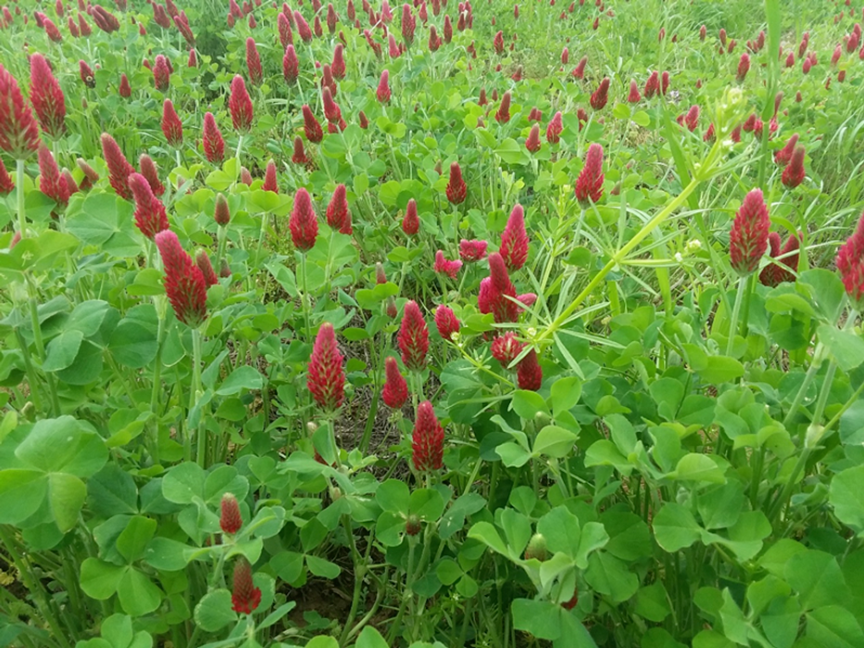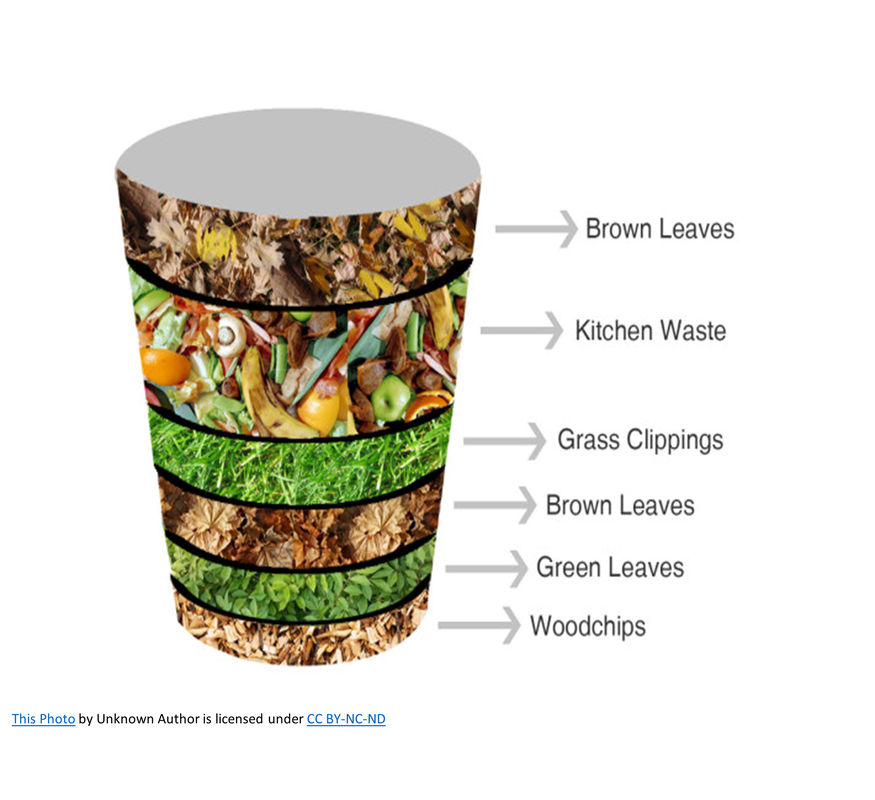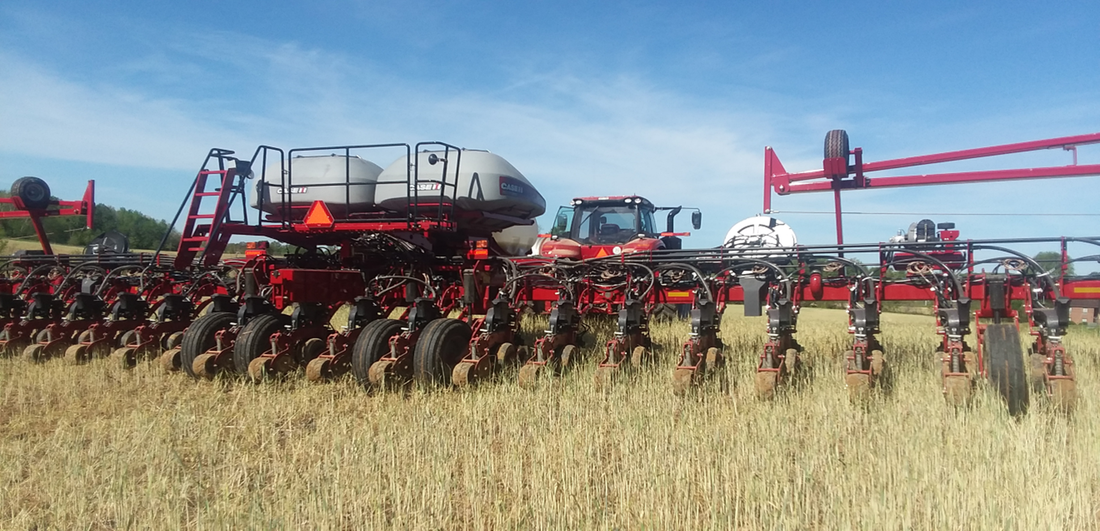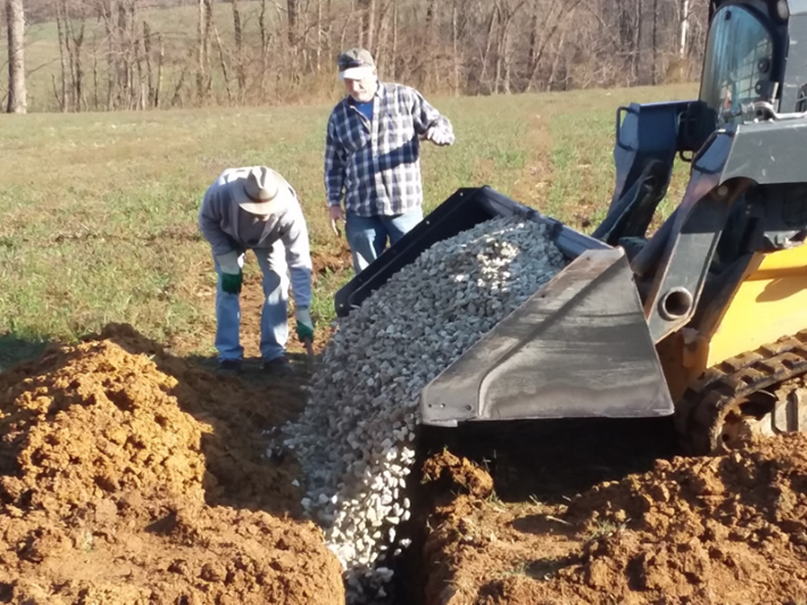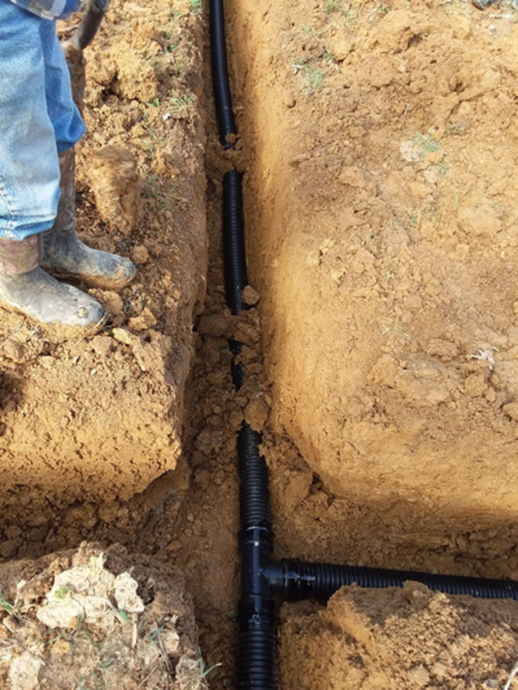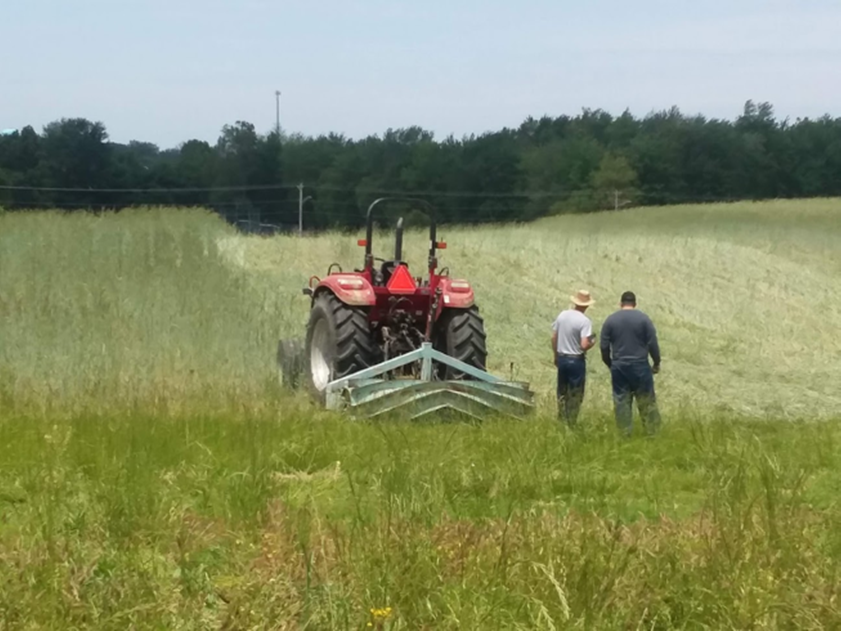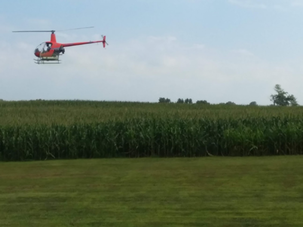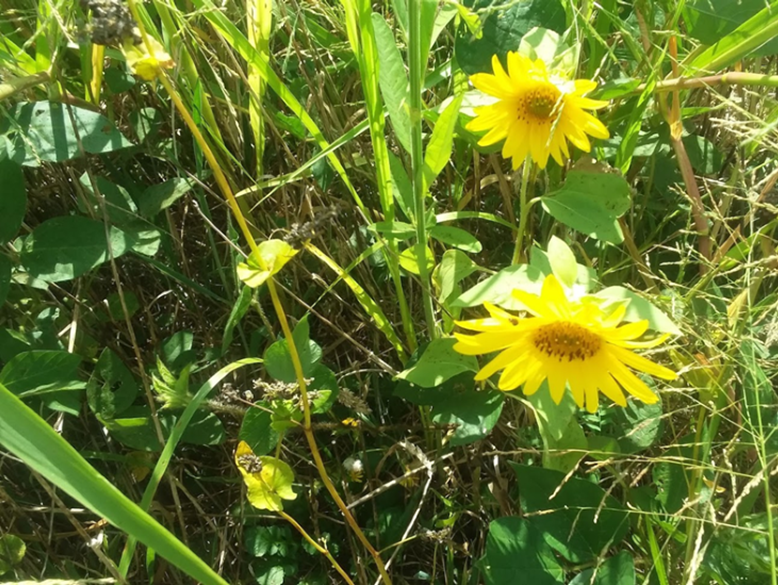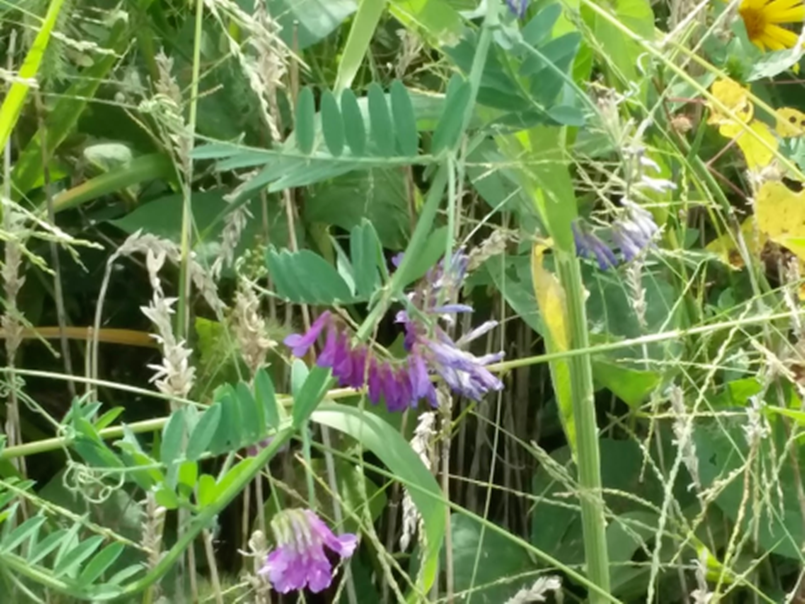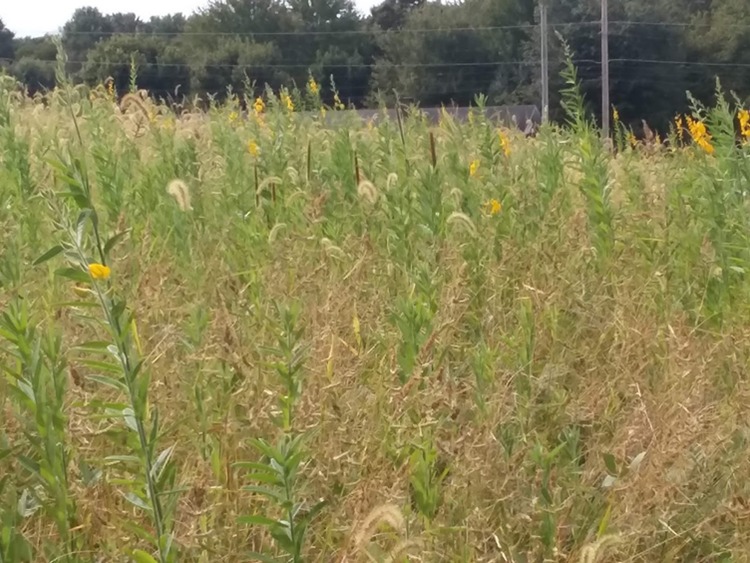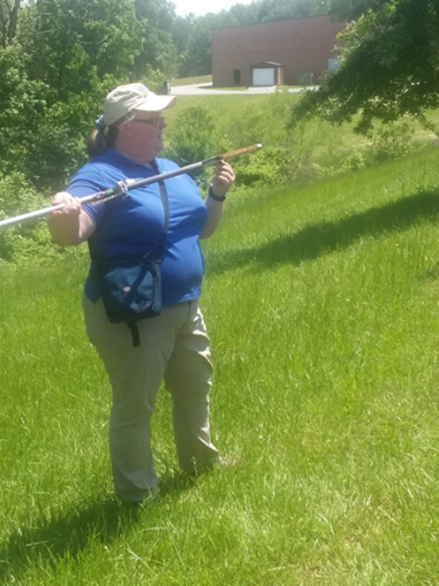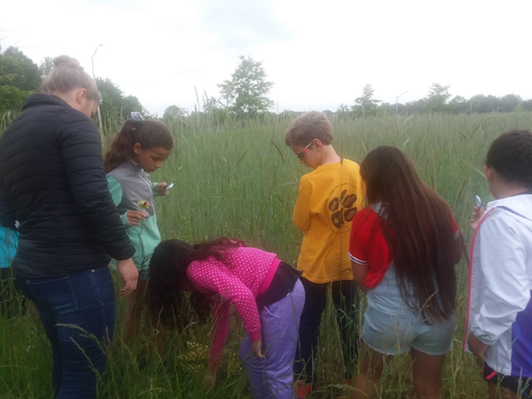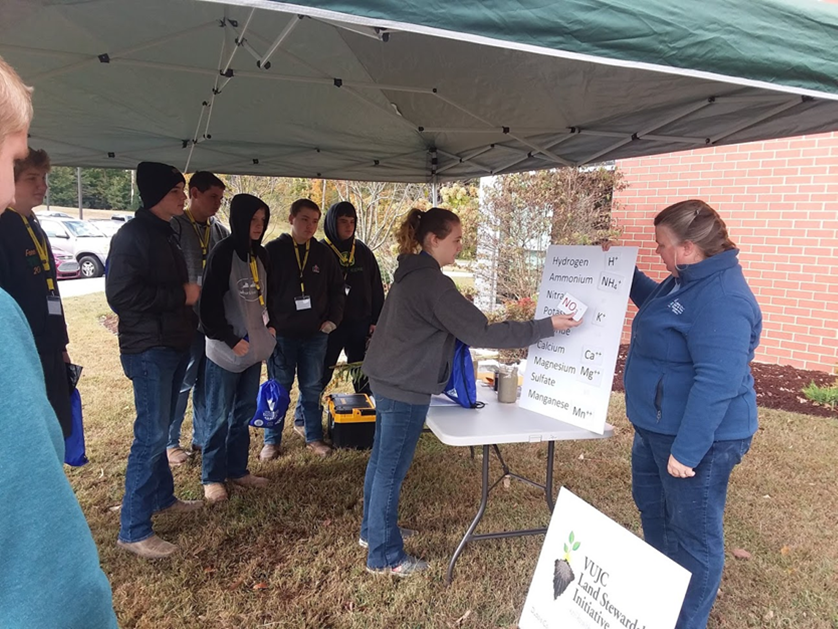| 2019 Annual Report | |
| File Size: | 3185 kb |
| File Type: | |
Notes From The Field
2019 was a year of growth in new directions for the Land Stewardship Initiative – growth in the fields as summer cover crops were introduced to a field, growth in height of cover crops and growth in target audiences reached. Like all farmers in the county, state, and the Midwest in general this was a stressful year for farming. The heavy spring rains prevented planting in the fields until May 25th and continued rain made timing of additional passes on the fields difficult to plan and implement.
State Soil Health Specialist Visited LSI
|
In April of this year, two French drains (a gravel filled trench directing water to an underground perforated tile) and three lines of tile were added to field 5 to help with drainage. A French drain was added into an existing tile line in field 7 and began functioning properly almost immediately, eliminating cuts in the field caused by rainfall.
|
For the first time in the history of the project we experimented with planting green. This means that the cover crops were still alive and growing at the time of planting. In fact, the standing Cereal Rye was 54 inches tall. The planter had no problems driving through the vegetation and placing seed down at the proper depth. Immediately after planting the cover crops were rolled down using a roller crimper. This created a mat of biomass over an inch thick to help retain moisture in the soil, prevent erosion and reduce weed pressure.
The 11 species of cover crops in Field 6 all bloomed and grew at their own pace. Buckwheat flowered early in the season. Hairy vetch bloomed continually throughout the summer and fall. The growing season concluded with a beautiful show of pearl millet and sun hemp. The clover grew and added nitrogen to the soil. The deep roots of several of the species should create good channels for next years crop growth. The decaying plant matter will add to the Soil Organic Matter and the nitrogen fixed by clovers and beans (legumes) will be available to the 2020 cash crop.
Education & Demonstration
|
We strengthened our outreach involvement with new audiences. In May, over 100 students from Fifth Street elementary school visited VUJC for a science field trip day. The Land Stewardship Initiative introduced them to the concepts of Soil Health with the Slake Test. They also learned about soil horizons using a soil probe to compare forest soils to grassed lawn soils.
|
In October, freshmen from all four of the Dubois County High Schools went on a “Tour of Opportunities” day - where they explored and toured local businesses, learned about career opportunities in various fields and had hands on experiences. 55 students chose the agriculture career track and toured VUJC learning about different career opportunities within the agriculture field.
The annual fall workshop for local farmers included a tour of the property with Travis Gogel (NRCS) to discover the attributes of the summer cover crops growing in field 6. Rob Bruner (Purdue Extension) spoke about how the climate and dramatic weather events are changing and will continue to influence the way we farm. He then demonstrated how to use drones to spot issues in fields such as weeds or nutrient deficiencies. Dr. Shalamar Armstrong (Purdue University Professor) shared his research on how the adoption of cover crop can reduce nutrient loss on a watershed level.
Looking To The Future |
|
Despite the delay in planting, harvest still occurred in early October. 2019 was the second highest average yield over all fields combined since the project began. Field 7 which was planted green had an average of 10 bushel an acre higher than the other fields. This is a positive success for planting into growing cover crops which requires slightly different management techniques. Gaps exist in the harvest data and weeds such as cocklebur and morning glory created challenges in small areas in the fields. Overall it should be noted that the harvest was better than anticipated given the challenges of the year.
In 2020 the fields will once again be planted with corn– this is a continuation of the goal of increasing the organic matter in the soil. Field 6 will return to production after a year of rest and regeneration with summer cover crops. As an added experiment the Ag Committee decided to keep the chemical burn downs in fields 1,2, and 5 the same as in 2019. However, to explore possible explanations for the bpa yield bump in field 7, the 2020 plan is to burn down a strip of cereal rye in field 7 and allow the remaining acres of the field to continue growing and once again plant green into standing cover crops. |
If you would like a chance to tour the LSI property to see these changes in person or have questions about adopting cover crops please call Melissa Ruschau to arrange a visit (812) 482-1171 ext. 3. The district has purchased a soil health testing kit and is willing to come to your farm for a site visit and evaluation of your soils’ health because after all - Soil health is the root of everything!
